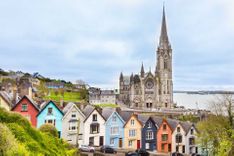- Activity
- Nature & Wildlife
- National Parks & Reserves
- History Culture Heritage
- Ireland
- Dublin
- Inspiration
- See & Do
- Where to stay
Planning your own trip? Prepare for your trip
Use Rough Guides' trusted partners for great rates
Travel advice for Ireland
From travel safety to visa requirements, discover the best tips for visiting Ireland
- Ireland travel tips for first-timers: what to know
- How to get to Ireland
- Getting around Ireland: Transportation Tips
- Best time to visit Ireland
- How to plan a trip to Ireland on your own
- Weather in ireland in February
- Weather in Ireland in March
- Weather in Ireland in April
- Weather in Ireland in May
- Weather in Ireland in June
- Weather in Ireland in July





















